It’s a new day and still glancing through things that identify us as Ghanaians.
The whole month of March is for the celebration of Ghana’s history and culture and above all, it’s a month for celebrating Ghana’s great victory in gaining Independence from colonial rule in 1957 from the British.
Still, on the Ghana Month Diaries, The Ghana Report wants to take readers through some of the beautiful artefacts in Ghana, some that are not being used in the urban areas but still relevant in rural areas, and others still playing significant roles in our daily lives on all occasions.
Below are some made-in-Ghana artefacts and their significance
- Rattan Furniture
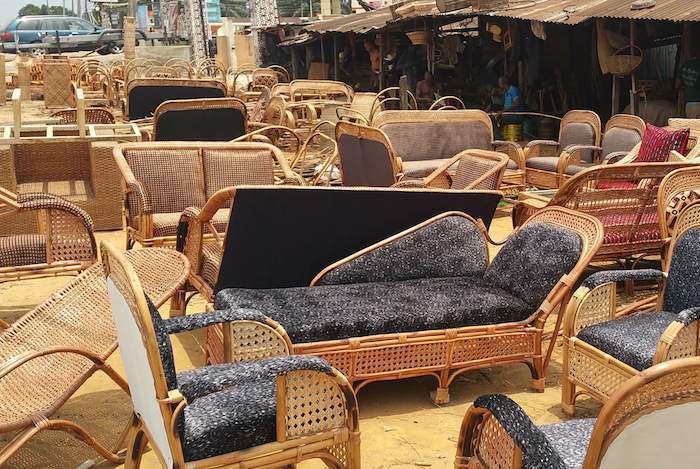
Images of rattan furniture
Rattan furniture is one of the rare and affordable artefacts in Ghana mostly used by elites and expatriates in the country.
The design of the rattan furniture always makes Ghanaians and tourists very attracted to it and yearn to buy more for their homes. The rattan furniture is locally made in Ghana and it is mostly done in Accra, Kumasi, Tamale and other places in the country.
Like ordinary wooden chairs and tables made from Odum, Wawa, or Iroko trees, the rattan furniture can be used in corporate offices, homes, restaurants, pubs and other important places to attract people.
- Baskets
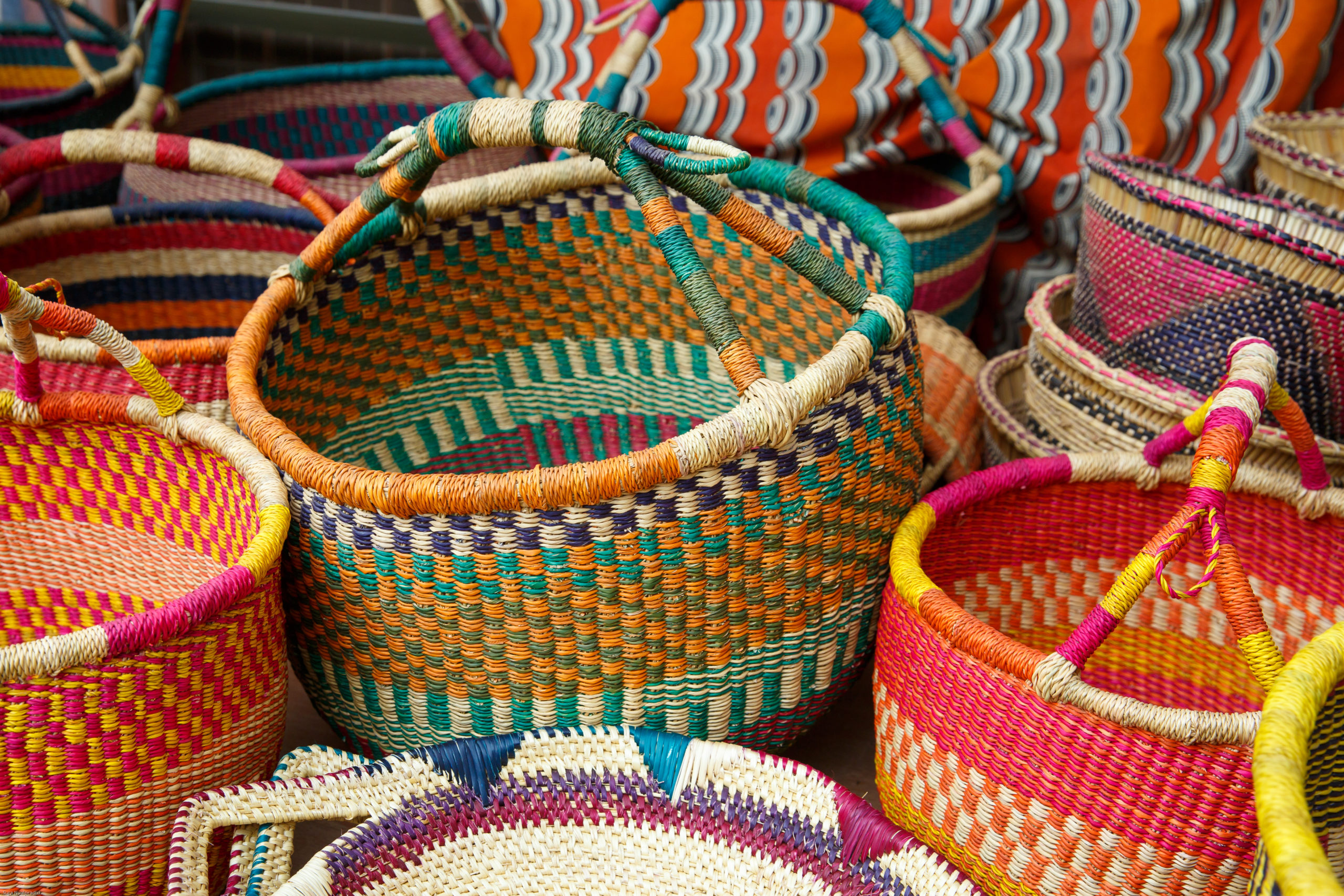
Baskets, mostly used by women in the olden days for shopping or carrying food to farms have now become very common in recent times.
The baskets are often woven in Bolgatanga in the Northern Region and Greater Accra Region.
Yes, Ghanaians have beautiful and attractive objects of cultural heritage to boast of and our traditional baskets can never be excluded.
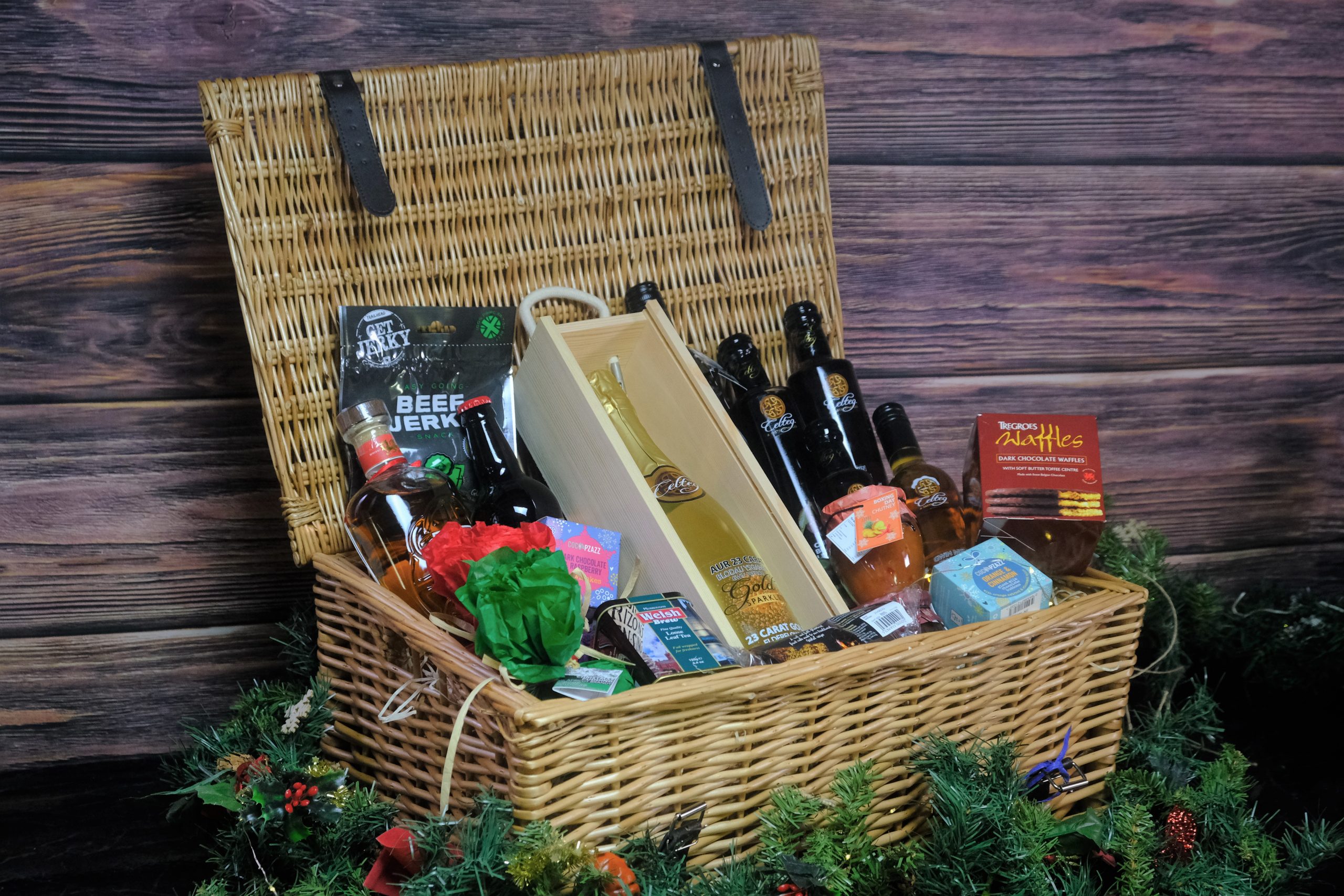
Loved ones prefer to present gifts in rattan baskets than using ordinary rounded plastic bowls because the traditional baskets look more attractive and very durable.
The elephant grass is also used to make hand fans. It is used to fan royals and others also use them in the kitchen.
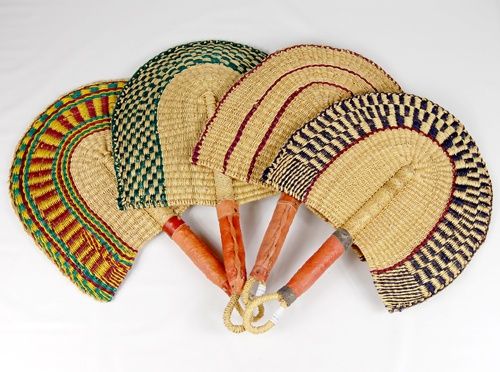
- Hearth
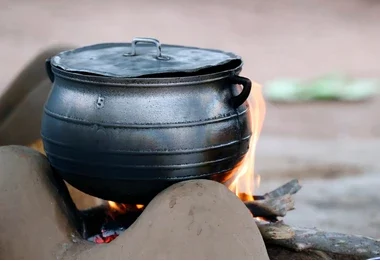
Image of a cauldron pot on a hearth
Hearth known in the Akan language as ‘Mutshia’ and in the Ga language ‘La-teh’ is one of the traditional objects that play a very important role in traditional homes.
The Hearth is made from clay and water mixed together. After the moulding, it is left to dry for some days before using it to cook.
During the 16th and 17th centuries, there was no oven, this was their traditional oven or gas cooker for that matter, used in preparing all dishes at home.
Now with the advent of ovens or electric gadgets, cooking is very easy at home.
Traditional or any typical Ghanaian will tell you that food prepared on a hearth tastes good and better than on a metal coal pot or electric cooker.
- Earthenware and wooden grinder
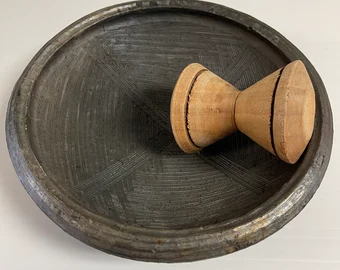
Wooden grinder in an earthenware
Earthenware and wooden grinder are some of the objects which are as old as Ghanaian history. The earthenware comes in various colours depending on the people who moulded them.
The black earthenware is made in the Eastern Region, the brown earthenware is made in Nfensi in the Ashanti Region and Tano-North in the Bono Region. Tano-North often does both black and brown earthenwares.
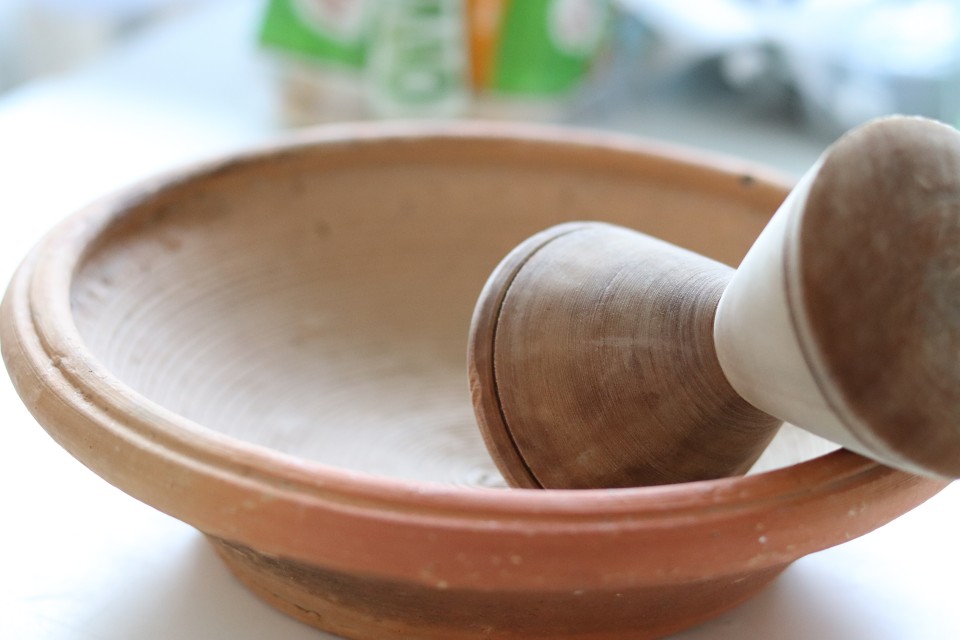
Brown earthenware
The earthenware is mostly used for grinding pepper, tomatoes, garden eggs, and other things.
It’s also used at homes and restaurants to serve meals, especially fufu or face the wall known as ‘Kokonte’.
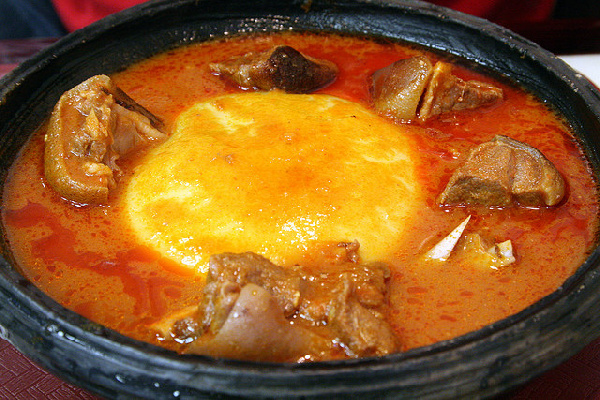
Fufu with palm nut soup and cow meat in earthenware
- Canoe

Canoes are some of the made-in-Ghana artefacts that play significant roles in coastal areas where fishing is their source of income.
Canoes serve so many purposes as they are used to convey people on water.
The canoe is made of strong wood that is able to secure fishers on precarious expeditions.
Canoe owners sometimes write motivational messages on the canoes to inspire others.
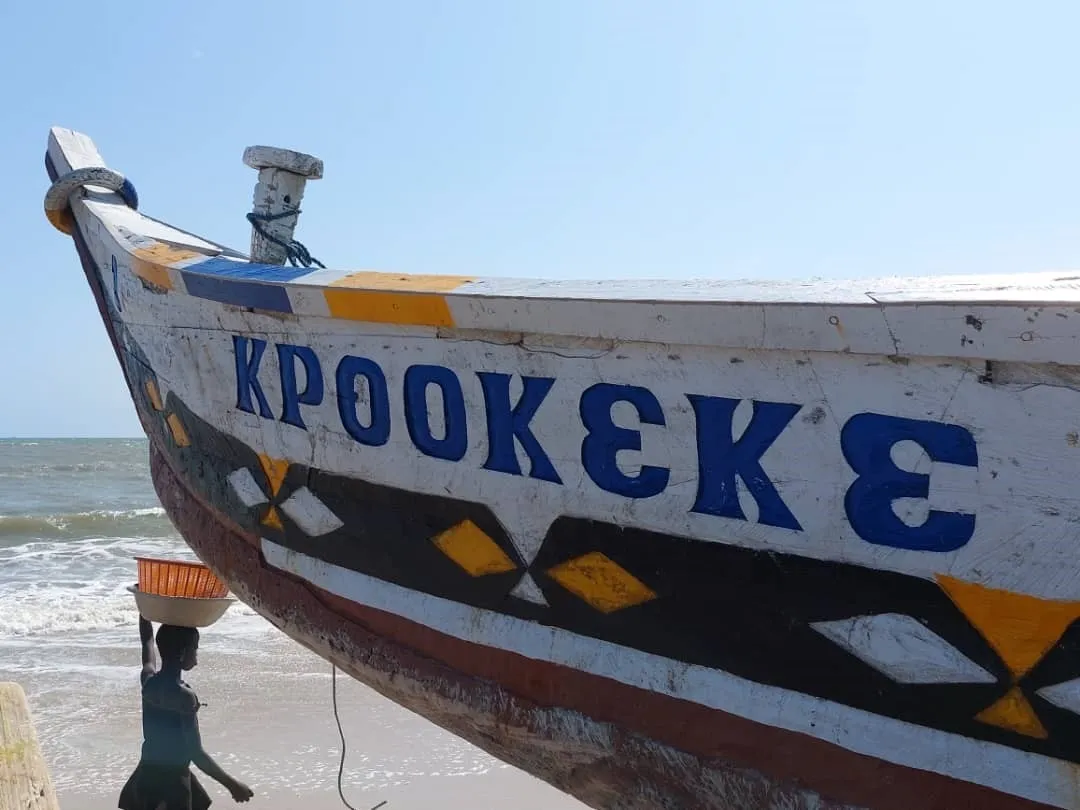
This is a canoe with the inscription ‘Kpoo K3k3’, which is a Ga word meaning only silence. Yes, indeed, it is often good to stay calm and silent in life and that can protect you from so many troubles in society.
- Wooden Drum (Konka)

Wooden drums in various sizes and colours can be found in Ghana. The drums, often crafted with African designs on them, tell so many stories about Ghanaians and their culture.
The wooden drums are mostly played during festivals, installations of chiefs and queens, festivals, school anniversary celebrations and national occasions like the annual Independence Day on 6th March.
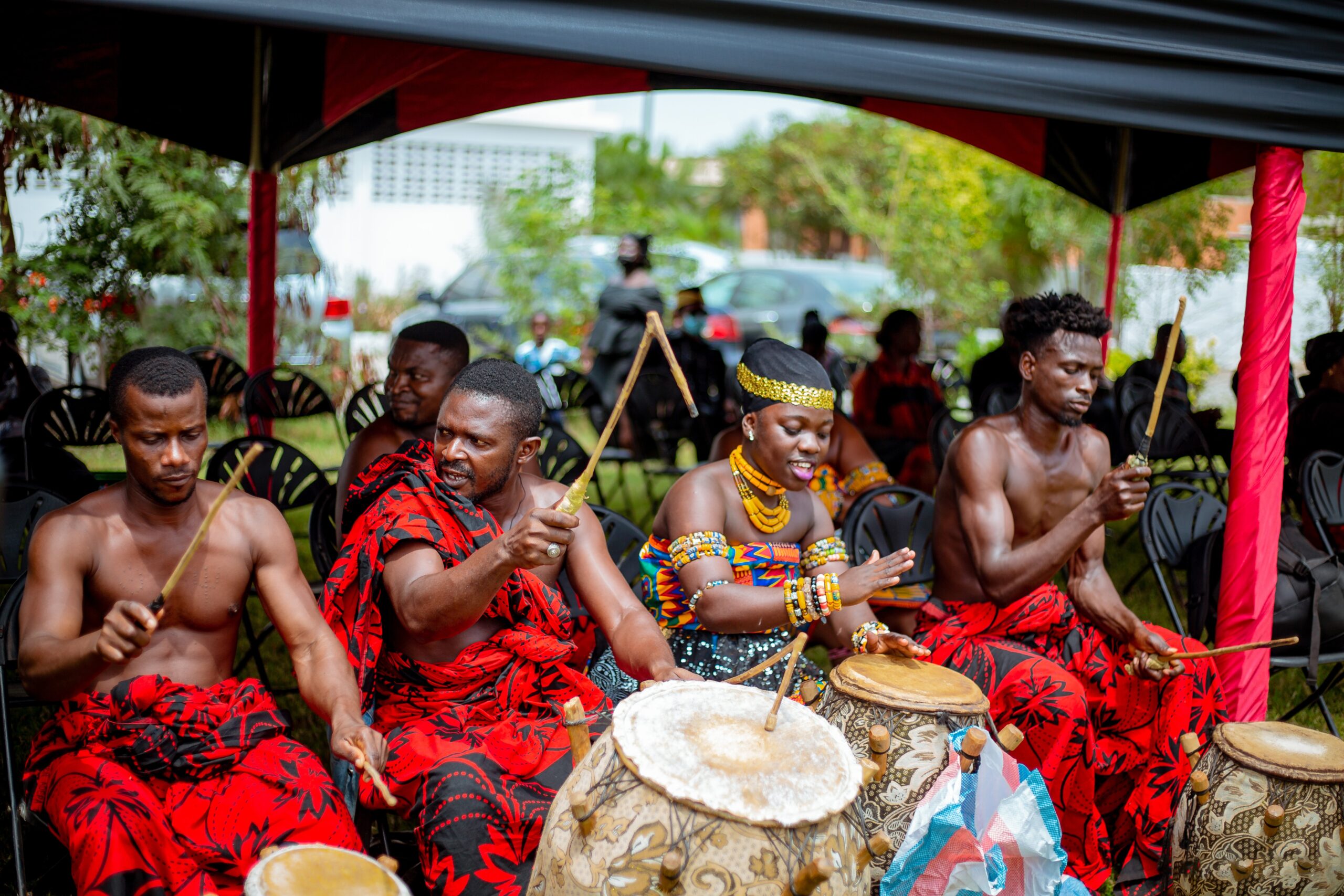
- African Beads

Beads play is a significant part of the Ghanaian culture, mostly worn by women and royals. Fashion has now paved way for all interested persons to also wear beads around their wrists.
Historically, women wearing beads around their waist symbolize womanhood, sexuality, femininity, fertility, healing, spirituality, body shaping, first menses, protection, seduction, and wealth, amongst other things.
Traditional leaders also wear beads around their wrists, necks and ankles to symbolize authority.




Not enough at all . Very poor